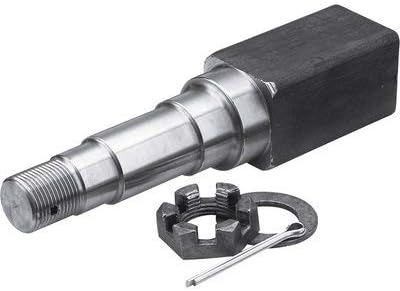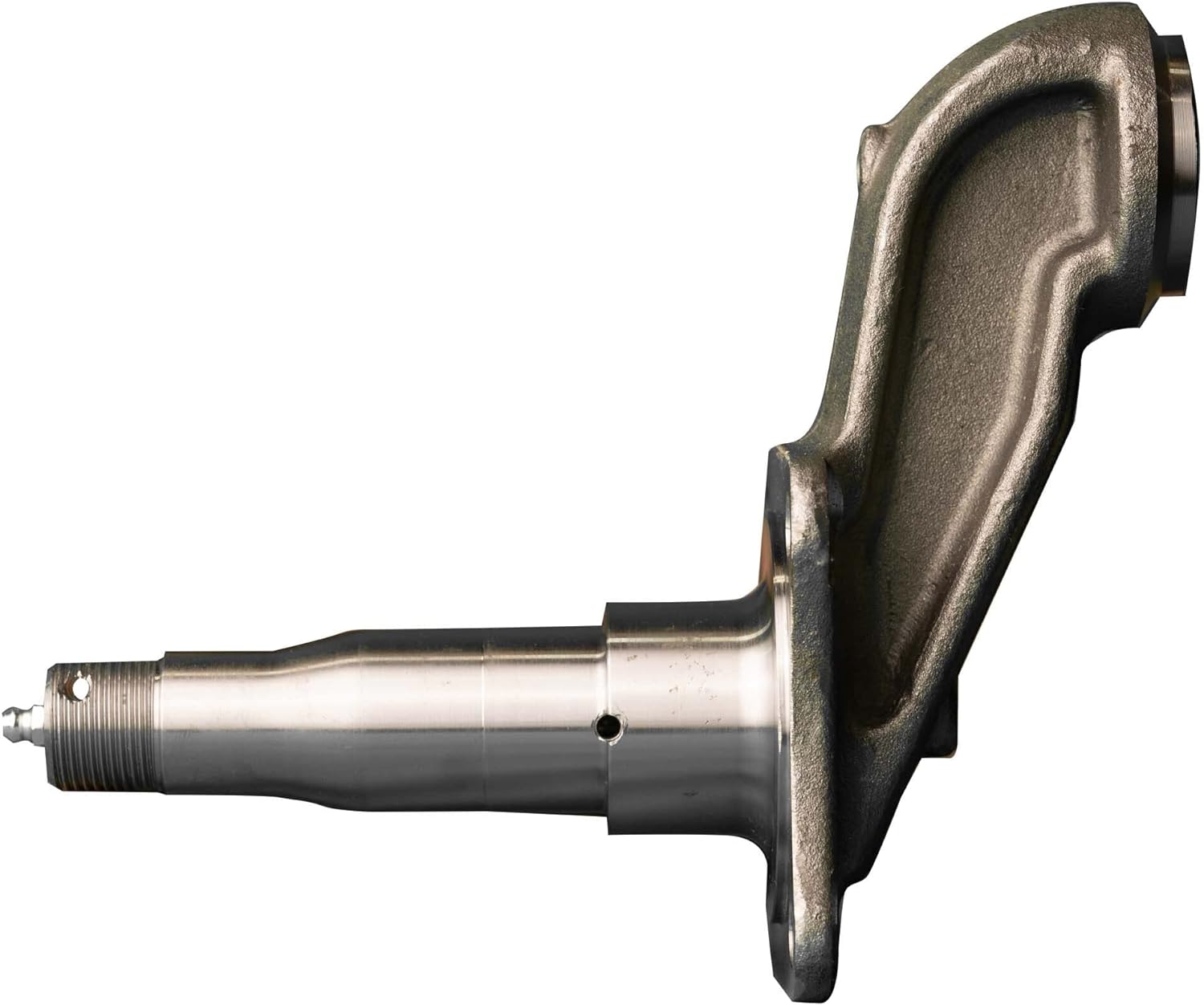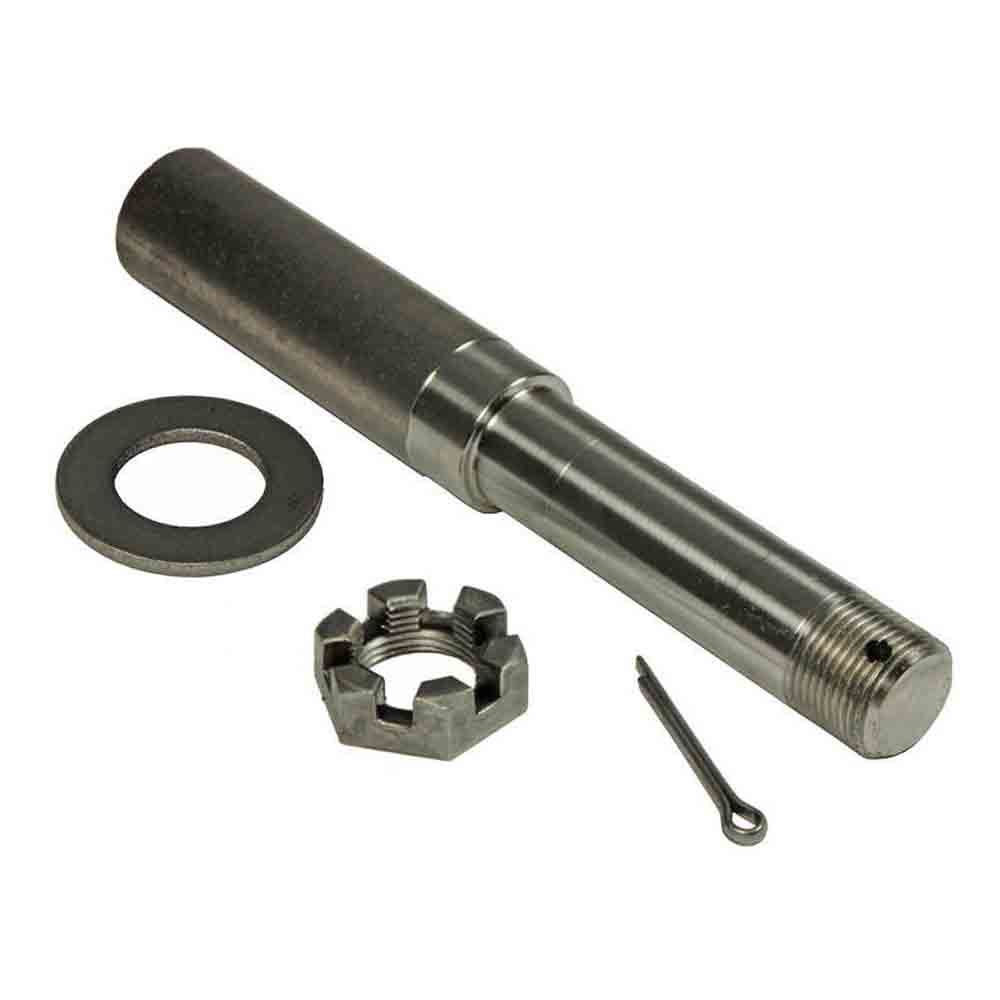Product Description
IATF16949 Factory Outlet Custom Heavy Duty Forging Trailer Axle Spindle
About Us
Most of our spindles are used in the manufacturing of or as replacement parts for various load caring uses including: Utility trailers, ATV trailers, farm trailers, motorcycle trailers, windmills, log splitters, lawn mowers , self-propelled agriculture equipment, and many more areas. Send us your sketch, plan, drawing, or dimensions and we will be happy to assist you. email or call us today for a free and a detailed quote.
About product
1.Material : Steel alloy
2.Surface Treatment : Anti-rust Oil
3.Packaging:Euro-standard Veneer Case of 1200mm*800mm*900mm
4.Process:forged , standblasting, packaging,delivery
5.Most of our products made of carbon steel, like 1035,1045,35CrMo,42CrMo,40Cr,ect
6.Also can follow your info,made by stainlee steel , and other special materials
Packing & Delivery
Our products are all packed in wooden cases to ensure zero damage. If customers have specific requirements for the packaging, we will gladly accommodate. The products will be sent to you within 30 days and we will arrange everything from the initial consultation to the delivery of your chosen port anywhere the world.
Packing Details :plywood case + Steel pallet
We can also customize the packing method according to customers’ needs.
Suitable for seaway transportation
| Processing Object: | Metal |
|---|---|
| Molding Style: | Forging |
| Molding Technics: | Forging |
| Application: | Machinery Parts |
| Material: | Steel |
| Heat Treatment: | Quenching |
| Customization: |
Available
| Customized Request |
|---|

Are there aftermarket axle spindle options available with enhanced durability or features?
Yes, there are aftermarket axle spindle options available that offer enhanced durability or additional features compared to the original equipment manufacturer (OEM) spindles. Here is a detailed explanation:
Aftermarket parts are manufactured by companies other than the vehicle’s original manufacturer. These companies often specialize in producing high-quality replacement parts that may offer improvements over the OEM components. When it comes to axle spindles, some aftermarket options are designed to provide enhanced durability or incorporate features that can benefit specific applications or driving conditions.
Here are a few examples of aftermarket axle spindle options with enhanced durability or features:
- Performance Spindles: Some aftermarket manufacturers offer performance-oriented axle spindles that are designed to handle higher loads and stress levels. These spindles are commonly used in applications where increased durability and strength are required, such as heavy-duty trucks, off-road vehicles, or vehicles used for towing. Performance spindles may be made of stronger materials or feature reinforced designs to withstand more demanding conditions.
- Upgraded Materials: Aftermarket axle spindles may be manufactured using advanced materials that offer improved strength and corrosion resistance compared to the original spindles. For example, spindles made from alloy steel or heat-treated steel alloys can provide enhanced durability and longevity, especially in harsh environments or applications subject to heavy loads.
- Improved Design and Engineering: Aftermarket manufacturers often analyze the weaknesses or limitations of OEM spindles and develop improved designs to address those issues. This may involve optimizing the geometry, reinforcing critical areas, or incorporating additional features for better performance. These enhanced designs can result in spindles that are more resistant to bending, warping, or premature wear, thereby increasing their durability.
- Specialized Spindles: In some cases, aftermarket axle spindles are designed for specific applications or driving conditions. For example, there may be spindles available that are specifically engineered for off-road use, providing improved ground clearance or compatibility with certain suspension systems. Likewise, there may be spindles designed for racing applications, where lightweight construction and enhanced performance characteristics are prioritized.
- Customization Options: Certain aftermarket manufacturers offer customized axle spindles that allow customers to tailor the spindles to their specific needs. This can include options for different bearing sizes, wheel bolt patterns, or spindle lengths to accommodate unique vehicle setups or modifications.
When considering aftermarket axle spindle options, it’s important to choose reputable manufacturers known for their quality and reliability. Look for spindles that meet industry standards and certifications, and consider factors such as the specific application, vehicle requirements, and intended use to ensure compatibility and optimal performance.
It’s also worth noting that while aftermarket axle spindles can offer enhanced durability or additional features, they may come at a higher cost compared to OEM replacements. However, the potential benefits in terms of improved performance, longevity, or customization options can make them a worthwhile investment, particularly for vehicles subjected to demanding conditions or specialized applications.
In summary, there are aftermarket axle spindle options available with enhanced durability or features. These may include performance spindles, upgraded materials, improved designs and engineering, specialized spindles, and customization options. When considering aftermarket spindles, it’s important to choose reputable manufacturers and consider factors such as compatibility, performance requirements, and intended use.

What is the role of grease and lubrication in maintaining a healthy axle spindle?
Grease and lubrication play a crucial role in maintaining a healthy axle spindle. The axle spindle is a vital component of a vehicle’s suspension system, and proper lubrication is essential to ensure its longevity and performance. Here’s why grease and lubrication are important:
- 1. Friction Reduction: One of the primary functions of grease and lubrication is to reduce friction between moving parts. In the axle spindle, there are multiple points of contact where components rotate or slide. Applying grease minimizes friction and heat generation, which can lead to wear and damage if left unchecked.
- 2. Wear Prevention: Grease forms a protective barrier between metal surfaces, preventing direct metal-to-metal contact. This helps prevent wear and damage to the axle spindle and associated components, such as wheel bearings and hubs.
- 3. Corrosion Resistance: Grease serves as a protective layer against moisture and corrosive agents. The axle spindle is exposed to the elements, and moisture or road salt can lead to corrosion. Proper lubrication with grease creates a barrier that inhibits corrosion and extends the spindle’s lifespan.
- 4. Temperature Regulation: Axle spindles can generate heat during operation. Lubrication helps dissipate this heat and maintain the spindle’s temperature within a safe range. Excessive heat can lead to premature component failure.
- 5. Noise Reduction: Properly lubricated axle spindles result in smoother and quieter operation. Inadequate lubrication can cause squeaks, squeals, or other unwanted noises during vehicle operation.
- 6. Enhanced Performance: Well-lubricated axle spindles contribute to the overall performance of the vehicle. They ensure that the wheels rotate freely, providing stability, control, and safe handling.
- 7. Extended Lifespan: Regular maintenance and lubrication can significantly extend the lifespan of the axle spindle and its associated components. This reduces the need for costly replacements and repairs.
Proper lubrication involves selecting the right type of grease or lubricant for the application, as well as adhering to a maintenance schedule that includes cleaning, inspection, and re-greasing as needed. Maintaining a healthy axle spindle through lubrication is essential for the safety and reliability of a vehicle, whether it’s a passenger car, truck, or other heavy-duty vehicle.

Are there differences between front and rear axle spindles in terms of design and function?
Yes, there are differences between front and rear axle spindles in terms of design and function. Here’s a detailed explanation:
The front and rear axle spindles serve similar purposes in a vehicle’s suspension system, but they have distinct characteristics and functions due to their positions and roles within the vehicle. Here are the key differences between front and rear axle spindles:
- Position: The front axle spindle is located at the front of the vehicle, usually connected to the steering system, while the rear axle spindle is positioned at the rear of the vehicle. The front spindle plays a crucial role in steering the vehicle, while the rear spindle primarily supports the rear wheel assembly.
- Steering Function: The front axle spindle is directly involved in the steering mechanism of the vehicle. It connects to the steering knuckle, which enables the front wheels to turn left or right, allowing the vehicle to change direction. The design of the front spindle incorporates features that facilitate steering, such as the attachment points for tie rods and steering components.
- Load Support: The rear axle spindle is primarily responsible for supporting the weight and load of the rear wheel assembly. It transfers the forces from the wheels to the suspension system and the vehicle chassis. The design of the rear spindle focuses on load-bearing capacity and durability to withstand the forces generated during acceleration, braking, and cornering.
- Drive Function: In vehicles with rear-wheel drive or four-wheel drive systems, the rear axle spindle may also have additional components for transmitting power from the drivetrain to the rear wheels. These components, such as axle shafts, differential gears, and drive flanges, are not typically found in front axle spindles.
- Braking System: Both front and rear axle spindles play a role in the vehicle’s braking system. However, the design and attachment points for brake components can vary between the front and rear spindles. The front spindle may incorporate mounting points for brake calipers and rotors, while the rear spindle may have provisions for brake drums or additional components for parking brake activation.
While there are differences in design and function between front and rear axle spindles, it’s important to note that these variations can also depend on the specific vehicle make, model, and suspension configuration. Different vehicles may have unique spindle designs and features tailored to their specific requirements.
Understanding the distinctions between front and rear axle spindles is important for proper maintenance, repair, and replacement. If you encounter issues with an axle spindle, it’s recommended to consult the vehicle’s manufacturer guidelines or seek assistance from a qualified mechanic or technician who can provide accurate diagnosis and appropriate solutions based on the specific axle spindle in question.
In summary, front and rear axle spindles differ in terms of position, steering function, load support, drive function (in certain cases), and braking system requirements. These differences arise from their respective roles in the vehicle’s suspension and drivetrain systems.


editor by CX 2023-12-06